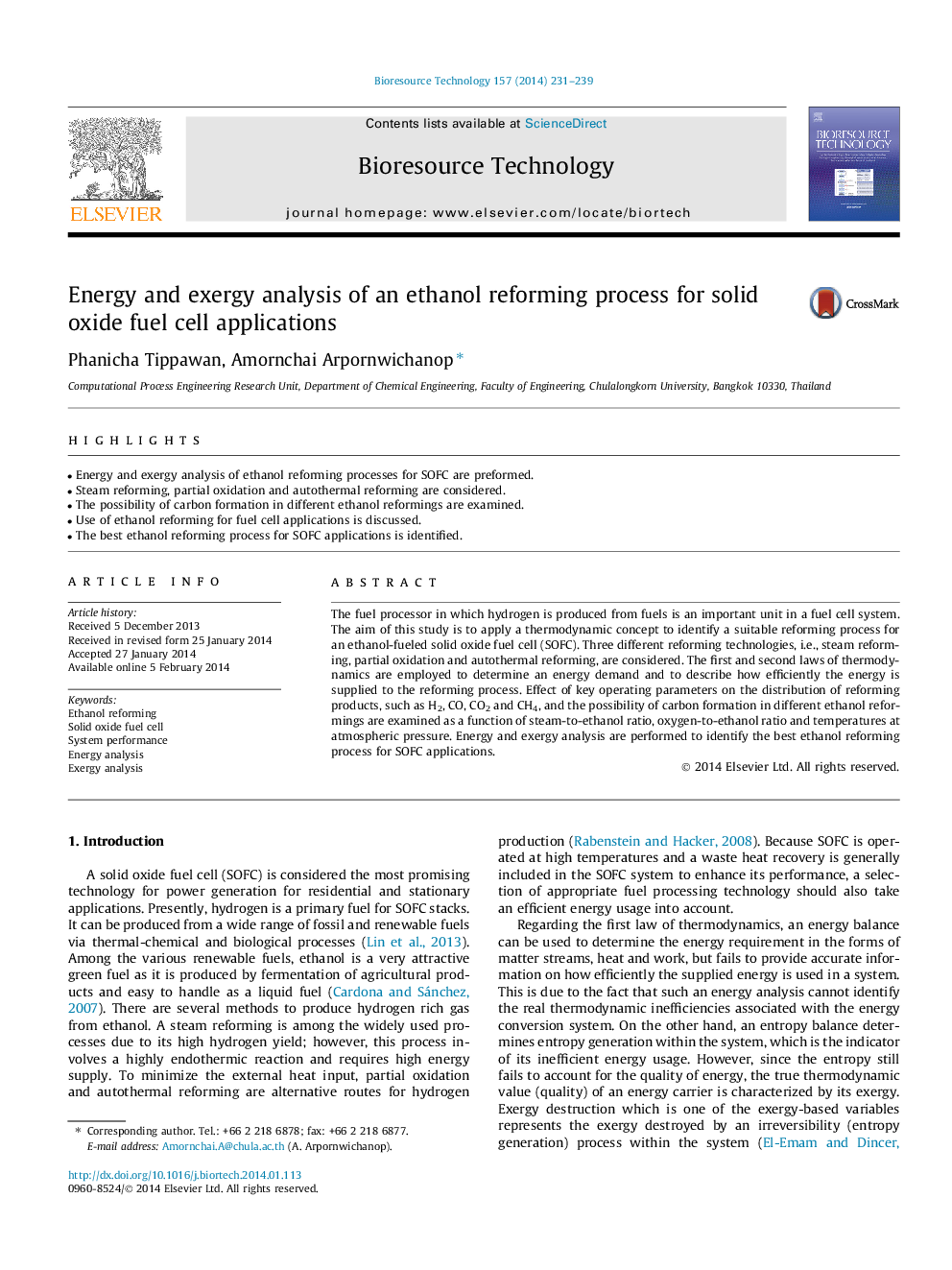| Article ID | Journal | Published Year | Pages | File Type |
|---|---|---|---|---|
| 680924 | Bioresource Technology | 2014 | 9 Pages |
Abstract
The fuel processor in which hydrogen is produced from fuels is an important unit in a fuel cell system. The aim of this study is to apply a thermodynamic concept to identify a suitable reforming process for an ethanol-fueled solid oxide fuel cell (SOFC). Three different reforming technologies, i.e., steam reforming, partial oxidation and autothermal reforming, are considered. The first and second laws of thermodynamics are employed to determine an energy demand and to describe how efficiently the energy is supplied to the reforming process. Effect of key operating parameters on the distribution of reforming products, such as H2, CO, CO2 and CH4, and the possibility of carbon formation in different ethanol reformings are examined as a function of steam-to-ethanol ratio, oxygen-to-ethanol ratio and temperatures at atmospheric pressure. Energy and exergy analysis are performed to identify the best ethanol reforming process for SOFC applications.
Related Topics
Physical Sciences and Engineering
Chemical Engineering
Process Chemistry and Technology
Authors
Phanicha Tippawan, Amornchai Arpornwichanop,
